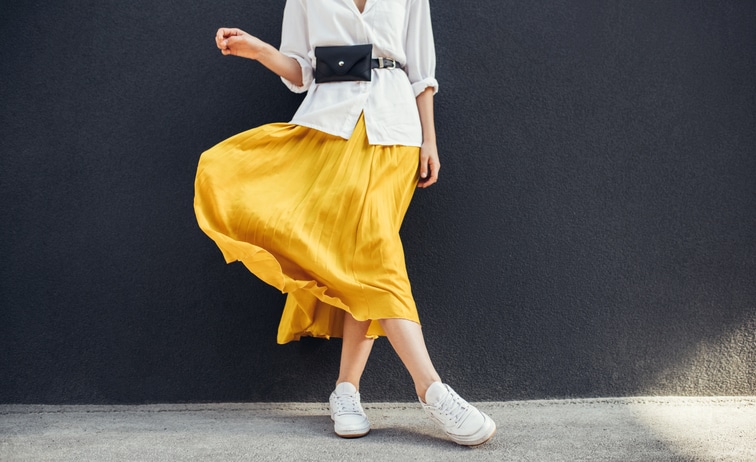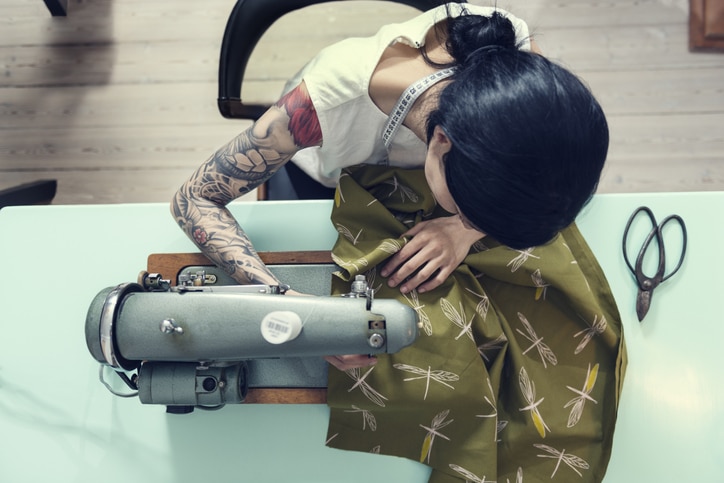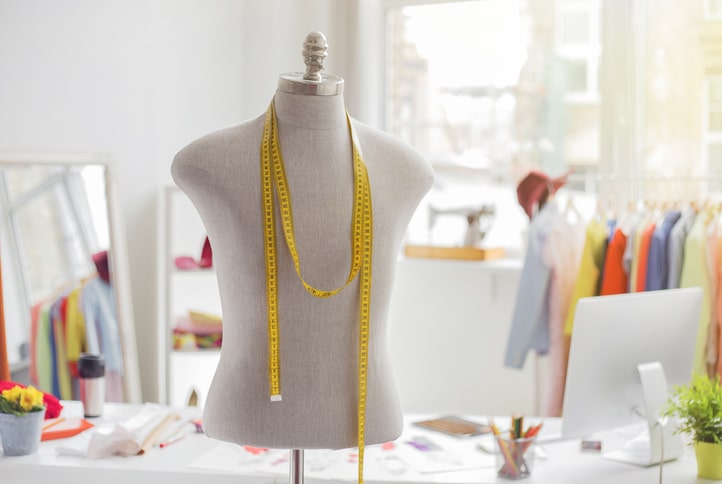Embarking on a sewing adventure isn’t just about getting crafty – it’s a way to express yourself, gain financial independence, and boost your creativity. In this article, we’ll guide you through the essential steps, tools, and techniques to kickstart your journey into making your own clothes.
Introduction to DIY Clothing Creation
DIY clothing is not only a trend but a flourishing movement. The rising popularity of crafting one’s attire reflects a desire for individuality and a separation from mass-produced fashion. From selecting unique styles to experimenting with an array of fabrics and patterns, homemade fashion is a canvas for self-expression.
The Economic and Environmental Benefits
Making your own clothing can be cost-effective in the long term. The initial investment in materials and tools pales in comparison to the cumulative cost of purchasing ready-made garments. Homemade clothing can also last longer, resulting in more wear.
A key aspect of this practice lies in reducing waste and environmental impact. Every year, the world produces up to 100 billion new clothing garments and 92 million tons of textile waste. By opting for sustainable materials and mindful production, sewists can play a role in curbing the ecological toll of the fashion industry.
The Joy and Benefits of Making Your Own Clothes
Beyond cost-effectiveness and environmental benefits, making clothes offers the opportunity for personalization. Each article of clothing has the potential to reflect individual style and personality. Creating self-made garments is also satisfying due to the sense of accomplishment it brings. It also represents dedication and skill, offering a fulfilling experience for sewists.
Evaluating the Costs of Making Your Own Clothes
Assessing the costs of making your own clothes is a critical step in the journey of DIY fashion. The initial investment in beginner-friendly sewing machines, patterns, and fabrics is inevitable. But, this cost paves the way for long-term profitability.
Is DIY Clothing Cheaper or More Expensive to Make?
Comparing the cost of DIY clothes to store-bought ones may show initial differences. You may spend more on a bolt of fabric than you would for a new shirt from a big box store. But, using durable fabrics and focusing on quality can make handmade clothing last longer. Sewists can also mend their clothes as needed, extending the lifespan of their garments.
Over time, the money saved from crafting and repairing your own clothes adds up!
Is Making Your Own Clothes More Ethical?
Making your own clothes is more sustainable than fast fashion, known for quick production and disposable trends. Creating your own clothes is also more ethical as it aligns with the values of environmental consciousness.
Choosing sustainable fabrics and supporting local makers allows sewists to participate in responsible consumption. Consider choosing eco-friendly fabrics such as organic cotton, recycled fibers, organic hemp, and more.
Sewists also have the opportunity to repurpose fabric scraps into smaller projects, such as scrunchies, twist headbands, and bows. Scraps can also be used to mend worn clothing. This results in less textile waste and fosters a more sustainable approach to fashion.

How Difficult is it to Make Your Own Clothes?
The difficulty of making your own clothes depends on skill level, complexity, and available resources. Though there’s a learning curve, the personal satisfaction and creative expression gained from making your own clothes make the journey worthwhile for many sewists.
Start with the Basics
Once you set up your sewing machine and gather materials, it’s time to learn the fundamentals. While basic sewing techniques can learned quickly, mastering intricate designs and techniques takes more time and practice.
New sewists should focus on learning essential techniques that are utilized in many projects, including gathering fabric to create ruffles, attaching sleeves, adding buttons, and more.
Beginners should take time to familiarize themselves with basic stitches, such as:
With dedication and patience, beginner sewists can start with simple projects and progress to more challenging ones with time. Find support from online tutorials, sewing books, and community resources.
Choose the Right First DIY Sewing Project
For beginners, it’s best to start with straightforward patterns to build foundational skills. Straightforward patterns require fewer steps and can typically be completed in a few hours. When selecting your first sewing project, consider the required time commitment and skill level.
Easiest Clothing Pieces for Beginners
Starting with easy clothing pieces is key to building confidence and skill. When selecting patterns, opt for those labeled “beginner” or “easy.” These often include detailed instructions and minimal pattern pieces.
There are many beginner-friendly clothing options available, including:
These garments provide the opportunity to practice stitching techniques while yielding wearable results.
Picking the Right Fabrics
When choosing a fabric to work with, consider beginner-friendly features, such as:
- Fabrics with texture or print (to hide sewing mistakes)
- Fabrics that are tightly woven (to avoid fraying)
- Fabrics that have minimal stretching
Some of the easiest fabrics to work with are cotton, polyester, and muslin. Beginners should be willing to try different fabrics, patterns, and difficulty-ratings without worrying about making mistakes. Sewing is a craft that takes time and dedication to master. Mistakes are a part of the learning process and should be expected.

Essential Furniture for the Home Sewist: Cabinets, Chairs, and Tables
Creating an efficient and comfortable sewing space is crucial for any home sewist. The right furniture organizes the workspace and enhances your sewing experience. Whether you have a separate sewing room or a small apartment workspace, choosing the right cabinets, chairs, and tables is essential for creating a successful sewing area.
Selecting the Perfect Sewing Cabinet
Selecting the perfect sewing cabinet takes time and consideration. It is important to pick a cabinet with enough storage for fabrics, tools, and accessories, ensuring an organized workspace.
When considering features, focus on the cabinet’s size, ensuring it accommodates your sewing machine and fits into your crafting area. Opt for durability to withstand regular use and prioritize cabinets with easy access to supplies.
The right sewing cabinet keeps materials organized and streamlines the sewing process. This allows sewists to work on their craft without the distraction of a cluttered workspace.
The Ideal Sewing Chair: Comfort Meets Functionality
Consider selecting an ergonomic sewing chair to enhance comfort, reduce fatigue, and improve productivity. Look for chairs with specific features to support individual needs.
Adjustable Height and Depth
Adjustable features ensure that a chair can be customized to suit your body and setup. The ability to modify height allows sewists to maintain proper posture, preventing discomfort and fatigue during long hours of sewing.
Adjustable depth allows sewists to position themselves comfortably, ensuring they can reach their sewing machine and work surfaces without straining.
Lumbar Support
For those planning to spend long hours at a sewing machine, lumbar support is a necessity. To prevent lower back strain, select a chair with lumbar support.
Additional Storage
Consider selecting a chair with additional storage. Extra storage provides a convenient solution for stashing essential supplies within arm’s reach. This streamlines the creative process and helps create a tidy, well-organized workspace.
Mobility Options
A sewing chair with a swivel base allows sewists to effortlessly rotate and reach various areas of their workspace without needing to stand up. Swivel bases and wheels are helpful when working on large sewing projects, providing easy access to different parts of the sewing table.
Comfort and Padding
Sewing often requires long hours of focused attention. A comfortable chair with cushioning allows sewists to remain comfortable throughout their creative endeavors. Padding in the seat and backrest helps prevent discomfort and strain on the body.
Beyond providing comfort, the chair should fit into the style of the sewing space. There are many sewing chairs with fun patterns available that are sure to liven up any workspace.
Sewing Tables: A Foundation for Creativity
Sewing and cutting tables provide foundational support for unleashing creativity in the world of crafting. When selecting a sewing table, aim for features that will streamline your workflow.
A Stable and Spacious Surface
Consider sewing tables with steel bases for maximum stability and straighter stitches. A stable surface ensures that the sewing machine remains secure, minimizing vibrations during operation.
A spacious surface provides room for maneuvering fabric and organization of sewing materials, reducing clutter.
Adjustable Size and Height
Sewing tables with adjustable sizes allow sewists to accommodate larger fabrics or projects that require extra space. For projects, tables with adjustable heights ensure comfort, whether sitting or standing.
Foldable Extensions
Foldable extensions can expand workspaces while also conserving space when not in use. This feature is useful for those with limited space, as it allows for easy storage when the extensions are not required.
Built-In Measuring Guides
A sewing table with built-in measuring guides provides a reference for accurate measurements, allowing sewists to cut fabrics and align stitches easily. This feature saves time and contributes to the overall quality of the finished projects.

From Hobby to Business: Start Selling Your Clothes
As sewing skills are refined, sewists may consider turning their hobby into a business venture. To sell DIY clothing, sewists need to invest in good materials, understand market demands, and build their brand from scratch.
Scaling DIY Clothing into a Business
When making a sewing business, sewists should consider market demand and find a niche for their creations to thrive. Market research helps identify trends, preferences, and gaps in the market. Selecting a niche focus enables sewists to appeal to a more targeted customer base.
Building a distinctive brand and establishing a strong online presence is crucial for reaching a broader audience. An online presence allows sewists to market their sewing businesses with ease.
From a legal perspective, it’s important to register a new business, get any necessary licenses, and adhere to local regulations. In terms of finances, sewists should create a detailed business plan outlining startup closets, pricing strategies, and projected revenue.
Start Your Sewing Journey Today
Sewing your own clothes offers a rewarding journey of self-expression, sustainability, and financial independence. From the joy of selecting fabrics to the satisfaction of wearing handmade clothes, beginner sewists can embark on a rewarding and personalized journey of creativity.

FAQs About Sewing Your Own Clothes
How Long Does Making a Simple Garment As A Beginner Sewist Take?
For those new to sewing, crafting a basic item such as a scarf or a simple skirt can typically take a few hours. The time required will depend on the complexity of the project and the beginner’s growing familiarity with sewing techniques.
Is Owning a Sewing Machine Essential for Making My Own Clothes?
While it’s possible to sew clothes by hand, using a sewing machine is highly recommended. It significantly speeds up the process and is more suitable for most clothing projects, especially for beginners.
What Types of Clothes Should Beginners in Sewing Start With?
Beginners are encouraged to start with simpler projects. As your sewing skills develop, you can gradually take on more complex garments, enhancing both your confidence and capabilities.
What’s the Estimated Initial Investment for Starting to Sew My Own Clothes?
The initial investment can vary. It typically includes the cost of a sewing machine, basic sewing tools, and materials, which can range from modest to more substantial amounts, depending on the quality and brand of the items chosen.
Are There Sustainable Fabric Options for Sewing?
Sustainable fabric choices are plentiful, including materials like organic cotton, linen, and bamboo. These eco-friendly options offer a responsible way to enjoy sewing while being mindful of environmental impact.
How Do I Select the Right Fabric for My Sewing Project?
Choosing the right fabric involves considering the garment’s intended use, the fabric’s characteristics like drape and feel, and your level of sewing expertise. Beginners may find it easier to start with more manageable fabrics such as cotton.
Can Sewing My Own Clothes Lead to Financial Savings?
Over time, sewing your own clothes can indeed be cost-effective. Creating high-quality, durable garments allows you to enjoy long-term savings compared to frequently purchasing new clothes.
Is It Feasible to Replicate Current Fashion Trends by Sewing at Home?
Definitely! With the right patterns and fabric, home sewing enthusiasts can recreate many of the latest fashion trends, adding a personal touch to each piece.
What Are Effective Ways to Quickly Improve My Sewing Skills?
Regular practice, starting with simpler projects, and making use of various learning resources such as online tutorials, classes, or local sewing groups are excellent ways to enhance your sewing skills.
Can Sewing Skills Be Used to Repair or Alter Store-Bought Clothes?
Absolutely. Proficiency in sewing allows you to create new garments and skillfully repair or alter store-bought clothes, which can extend their lifespan and ensure a better fit.
What Are the Key Factors to Consider When Choosing a Sewing Cabinet?
Selecting the ideal sewing cabinet involves considering the size of your workspace, the storage capacity needed for your materials, and specific features like built-in organizers or adjustable shelves. The perfect cabinet should offer a balance of space efficiency and accessibility, enhancing your overall sewing experience.
How Do I Find the Best Sewing Chair and Table for My Needs?
A good sewing chair should be ergonomically designed for comfort, with adjustable features to suit your body type and sewing habits. For the sewing table, look for stability, ample workspace, and adjustable height or expandable features to accommodate a variety of sewing projects, ensuring both comfort and practicality in your sewing environment.
